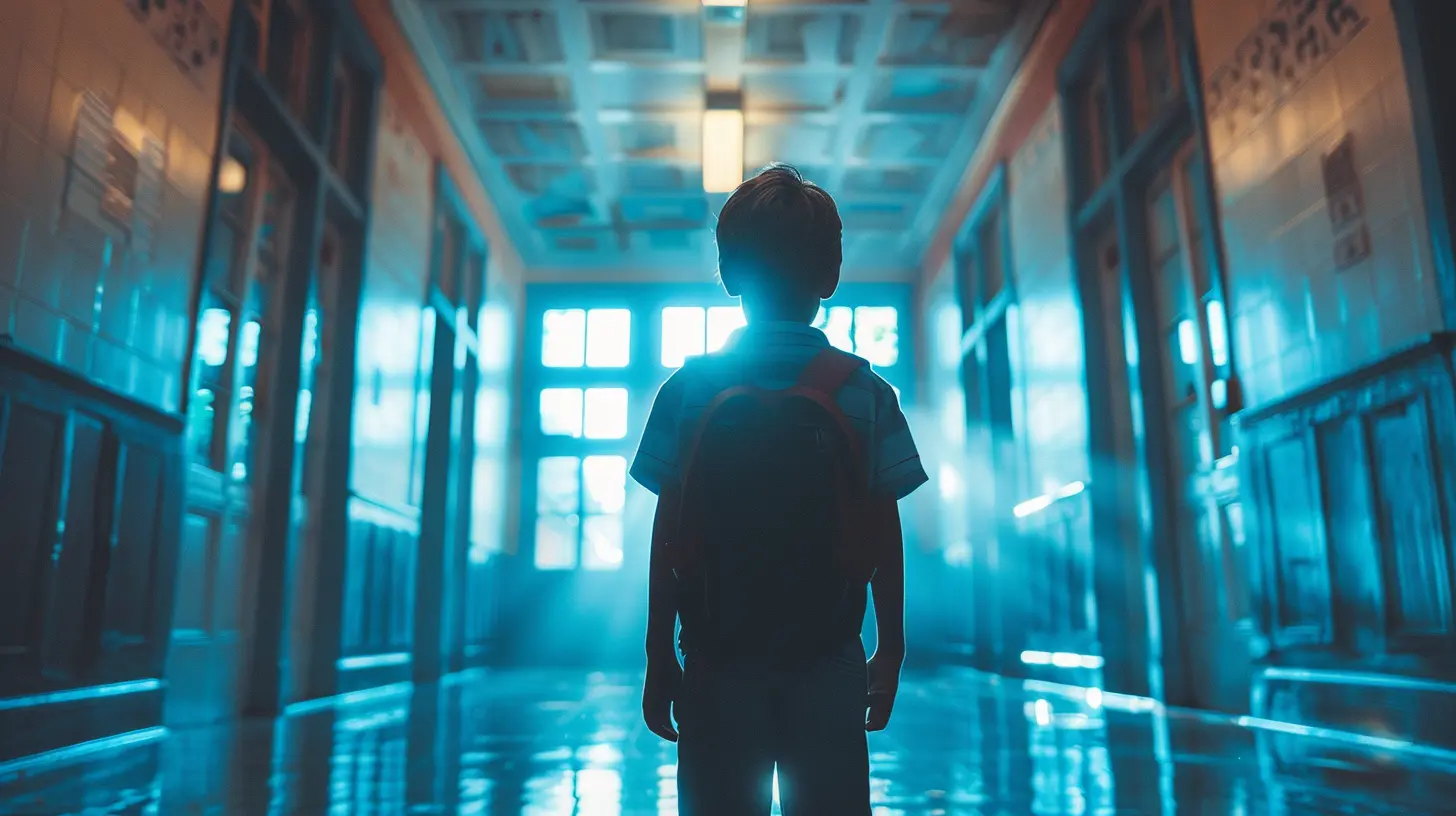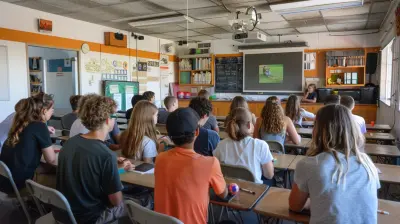Addressing Trauma in the Classroom: What Teachers Need to Know
12 May 2025
As educators, we play a pivotal role in shaping the lives of our students. We’re not just teaching math, science, or literature—we’re also influencing how young people grow emotionally and socially. But what happens when trauma enters the classroom? How do we, as teachers, respond to students who may be carrying emotional wounds that we cannot see? Addressing trauma in the classroom is not just important; it's essential. If you're wondering how to help students who’ve experienced trauma, keep reading.

Understanding Trauma in Students
First things first—what exactly is trauma? Trauma isn't just about a single event; it's about the lasting impact of that event on a person's emotional, psychological, and physical well-being. This could stem from abuse, neglect, poverty, or even witnessing violence. For a child, experiencing trauma can completely alter how they perceive the world, how they interact with others, and yes, how they learn in the classroom.Now, some of our students may carry trauma with them every day, and here’s the tricky part: they may not even know it. You see, trauma can manifest in various ways—some students might act out, while others might withdraw completely. Some might struggle with focus, and others might seem hyperactive or anxious. As their teacher, you’re in a unique position to notice these signs before anyone else.
Signs of Trauma in the Classroom
Before diving into how to address trauma, let’s first get familiar with the different signs of trauma that you might observe in the classroom. Keep in mind that every child is different, so not all students will display the same behaviors. However, here are some common indicators:- Emotional Outbursts: Students may have unpredictable emotional responses. They might become angry, frustrated, or upset over minor issues.
- Withdrawal or Detachment: On the flip side, some students might seem disconnected, quiet, or unengaged. They may avoid eye contact or social interactions with you and their peers.
- Hypervigilance: Some students may seem overly alert or anxious, constantly on edge as if waiting for something bad to happen. This is a common reaction to trauma.
- Difficulty Concentrating: If trauma is weighing heavily on a child, focusing on schoolwork can seem impossible. They might zone out or find it hard to stay on task.
- Physical Symptoms: You might also notice headaches, stomachaches, or complaints about feeling unwell—common physical responses to trauma.
- Risky Behavior: Some students might engage in risky behavior, such as substance abuse, or display aggression toward others.
These behaviors are often cries for help, even if the student isn’t consciously aware of it. So, how can teachers create a safe and supportive environment for these students?

Creating a Trauma-Informed Classroom
One of the most crucial steps in addressing trauma is to create a trauma-informed classroom. This doesn’t mean you need to become a therapist—far from it. But it does mean that you’ll need to approach your students with awareness, empathy, and understanding.1. Build Trust and Relationships
For a student who has experienced trauma, trust is everything. They need to know that you’re in their corner, that you won’t abandon them, and that you genuinely care. This can take time, but it’s worth the effort. Simple actions like greeting students at the door, listening intently when they speak, and being consistent in your behavior can help build that much-needed trust.Ask yourself: How can I show my students that I’m a safe person they can rely on?
2. Create Predictable Routines
Children who’ve experienced trauma often feel like their world is out of control. By establishing predictable classroom routines, you provide a sense of stability and safety. Create a daily schedule, and stick to it as much as possible. When changes are necessary, give students a heads-up to help them adjust.Think of your classroom routine as the steady rhythm of a drumbeat—a constant that students can rely on.
3. Foster Emotional Safety
Emotional safety is just as important as physical safety. Students need to know that they won’t be judged or humiliated for their feelings and behaviors. Encourage open communication and practice active listening. Use phrases like, “I’m here if you want to talk,” or “I understand that you’re upset, and that’s okay.”It’s like being the emotional anchor in a stormy sea. Stay calm, steady, and present, even when emotions are running high.
4. Teach Emotional Regulation Skills
Some students simply don’t know how to manage their emotions because they’ve never been taught. You can help by teaching basic emotional regulation strategies. This might include mindfulness exercises, breathing techniques, or journaling to help students process their emotions.Consider incorporating "brain breaks" into your lessons—short, structured breaks that give students time to refocus. You could do a quick breathing exercise, or let students stretch and move around. These breaks not only help with emotional regulation but also improve overall focus and learning.
5. Offer Trauma-Sensitive Responses
When a student acts out or withdraws, it can be tempting to immediately resort to discipline. However, in a trauma-informed classroom, you take a different approach. Instead of asking, “What’s wrong with you?” ask, “What happened to you?” This subtle shift in perspective makes a world of difference.Let’s say a student becomes disruptive during a lesson. Instead of issuing a punishment right away, you might pull them aside and say, “I noticed you seemed upset today. Is there something bothering you?” Address the root cause, not just the behavior.

Collaborating with Support Systems
While teachers play a huge role in addressing trauma, it's important to recognize that you’re not in this alone. Collaborating with school counselors, social workers, and parents is crucial. Open lines of communication can ensure that you’re all working together to support the student.1. Work with School Counselors
School counselors are trained to handle emotional and behavioral issues, and they can offer valuable insights into how to support traumatized students. They can also help create individualized plans for students who need additional support.2. Engage Parents and Caregivers
It’s essential to involve parents or caregivers in the process whenever possible. They may not always be aware of how trauma is affecting their child’s school life. Approach these conversations with sensitivity and focus on collaboration. Instead of blaming or accusing, express your concerns and ask how you can work together to support the student.3. Provide External Resources
Sometimes, the support a student needs goes beyond what you can provide in the classroom. In these cases, it’s important to connect students and their families with external resources, such as therapists, social services, or community programs. Your school may already have a network of professionals that can help, so don’t hesitate to refer families to these services.
Self-Care for Teachers
Let’s not forget about you. Dealing with trauma in the classroom can be incredibly draining, both emotionally and mentally. You can’t pour from an empty cup, right? This is why self-care is essential for teachers. You need to take care of your own mental health so that you can be fully present for your students.1. Set Boundaries
It’s easy to feel like you need to "save" every student, but that’s not your job. Your role is to support and guide, not to fix every problem. Set clear boundaries between work and your personal life to prevent burnout.2. Seek Support
Don’t hesitate to lean on your colleagues or supervisors for support. Sometimes just talking through a difficult situation with another educator can help you process your emotions and gain perspective.3. Practice Mindfulness
Just as you teach your students emotional regulation, it's important for you to practice it too. Mindfulness techniques, such as deep breathing or meditation, can help you manage stress and stay calm in tough situations.Final Thoughts: A Compassionate Approach
Addressing trauma in the classroom isn’t about being perfect; it’s about being present and compassionate. Trauma can affect every aspect of a student's life, including their ability to learn. But by creating a safe, predictable, and supportive environment, you can make a world of difference.Remember, you don’t have to have all the answers. Simply being a steady, caring adult in a child’s life can have a profound impact. So, the next time you notice a student acting out or withdrawing, don’t just assume they’re being difficult—consider that they might be carrying more than you know.
all images in this post were generated using AI tools
Category:
Mental Health In SchoolsAuthor:

Madeleine Newton
Discussion
rate this article
5 comments
Clementine McCarron
This article effectively highlights the critical importance of recognizing and addressing trauma in the classroom. By equipping teachers with the necessary tools and understanding, we can create a supportive environment that fosters healing and learning for all students. Essential reading for educators!
May 18, 2025 at 11:49 AM

Madeleine Newton
Thank you for your thoughtful comment! I'm glad you found the article valuable for educators in fostering a supportive classroom environment.
Quill Lopez
This article provides essential insights for teachers to effectively support students' emotional well-being and foster a trauma-informed learning environment.
May 16, 2025 at 6:58 PM

Madeleine Newton
Thank you for your thoughtful comment! I'm glad you found the insights valuable for supporting students' emotional well-being in the classroom.
Adrian Reyes
Understanding trauma is essential for creating supportive classroom environments.
May 14, 2025 at 7:17 PM

Madeleine Newton
Absolutely! A deep understanding of trauma equips teachers to foster empathy, resilience, and a safe space for all students.
Kova Long
Addressing trauma in the classroom is like navigating a challenging game of Twister—teachers need to be flexible, aware of their surroundings, and sometimes ready to catch a student before they fall! Let's spin those wheels of understanding and create a safe space for all learners!
May 13, 2025 at 12:19 PM

Madeleine Newton
Absolutely! Creating a trauma-informed classroom requires adaptability and awareness, much like a game of Twister. By fostering a safe and supportive environment, we can help all students thrive. Thank you for your insightful comment!
Olympia McGinnis
Essential insights for fostering trauma-informed classrooms.
May 13, 2025 at 4:27 AM

Madeleine Newton
Thank you! I'm glad you found the insights valuable for creating supportive learning environments.




